Statsig vs. PostHog
Both are powerful, both have rave reviews, and many of the features overlap. Besides that cute hedgehog, what’s the difference?
Statsig's key advantages over PostHog are:
A platform that scales with you
Enterprise-grade depth, not surface-level breadth
First-class support from the team building the product
Built for cross-functional product teams
Your warehouse or ours

Key Differences
PostHog and Statsig both offer all-in-one platforms that help builders be more data-driven in how they develop products, ranging from product analytics and session replay to feature flagging and experimentation.
01
A platform that scales with you
Statsig powers companies at every stage—from startups watching early user sessions to enterprises like Atlassian, OpenAI, and Flipkart running thousands of experiments across millions of users. While PostHog is built primarily for early-stage dev teams, Statsig is purpose-built to grow with you, eliminating the need to re-platform as your product, team, and data needs evolve.
02
Enterprise-grade depth, not surface-level breadth
PostHog offers an impressive breadth of features out of the box—but many are relatively shallow compared to best-in-class alternatives. In contrast, Statsig goes deep on the workflows that matter most. From a statistically rigorous experimentation engine to enterprise-grade feature flagging and impact measurement, Statsig is purpose-built for scale, precision, and trust.
03
First-class support from the team building the product
Statsig doesn’t treat support as a separate function. Our engineers, PMs, designers, and data scientists are the ones answering questions, hopping on Slack, and jumping into debugging sessions. We stay close to customers by design—ensuring fast answers, deep context, and real product influence with every interaction.
04
Built for cross-functional product teams
PostHog is designed first and foremost for developers. Statsig supports the entire modern product org—developers, PMs, and data scientists alike. Whether you’re instrumenting events, setting up experiments, analyzing funnels, or coordinating feature rollouts, Statsig gives each team the tools and context they need to move fast and work together.
05
Your warehouse or ours
Statsig gives you the flexibility to choose how and where you work with data. Want to keep full control and visibility within your own Snowflake or GCP warehouse? Go warehouse-native. Prefer to stay fully managed in the cloud? Let us handle everything. Statsig adapts to your infrastructure—not the other way around.
Feature Comparison
Platform
Both Statsig and PostHog offer robust platform features, with a few notable differences between the two platforms.


A/B testing
Test changes and analyze impact
Feature flags
Roll out features safely; toggle features for cohorts or individuals
Product analytics
Track events and conversion; analyze user behavior
Dynamic config
Replace hard-coded values in your app with config values
Session replays
Watch real users use your product; debug behavior
User surveys
Ask users for qualitative feedback and gather responses
Web analytics
Auto-capture key website engagement and performance events
Low/no-code experimentation
For less technical teams to run experiments in tandem with Eng/Product teams
Warehouse Native
Use our warehouse or bring your own
Error tracking
Find and track errors in your product
In progress
Experimentation
While both platforms support basic A/B testing, Statsig is purpose-built for high-scale experimentation with advanced statistical methods (e.g. Bonferroni correction, CUPED, interaction detection), sequential testing, meta-analysis, and templates. Statsig also supports mutually exclusive experiments, team-based workflows, and warehouse-native setups. PostHog’s experimentation is simpler—built on top of feature flags—and lacks many of the advanced capabilities and safeguards needed for scaled, rigorous testing.


Fully hosted (cloud) deployment
Vendor hosts your data
Warehouse-native deployment
Run on top of your existing source of truth datasets
Bayesian & Frequentist methods
Support for both Bayesian and Frequentist methods
Mutually exclusive experiments
Ensure concurrent experiments do not interfere with each other
Holdouts
Create holdout groups not exposed to any experiment treatment
Sequential testing
Prevent early peeking and continuously analyze experiment data
Switchback testing
Measure impact even in the presence of network effects
Multi-armed bandits
Continuously optimize allocation toward high-performing variant
Geo-based experiments
Measure the incremental impact from marketing initiatives
No-code experiments
Create experiments with a visual editor
Essential statistical methodologies
Bonferroni correction, CUPED, Winsorization etc.
Advanced statistical methodologies
Stratified sampling, interaction detection, heterogeneous treatment effects, Benjamini Hochberg procedure etc.
High level of metric flexibility
Percentile, ratio, first/latest value, capped, and more available out-of-the-box
Experiment summaries and reports
Consolidate all experiment details, export, and share as a PDF
Team-based experiment templates
Create and enforce templates at the team or organization level
In-platform collaboration
Support for team collaboration and discussions within the console
Meta-analysis views
Generate meta-level insights from your corpus of experiments
Knowledge base
Maintain a searchable repository of experiment learnings
Built-in product analytics
Dive deeper into metrics and continuously develop new ideas to test
Feature Flags
Both Statsig and PostHog offer robust feature flagging solutions, with a few key differences. Statsig supports boolean flags via Feature Gates and non-boolean flags via Dynamic Configs, along with advanced capabilities like built-in metric tracking, automated regression alerts, and rollbacks. If you’re not tracking regression metrics, gate exposures are free. PostHog combines boolean and non-boolean flags under a single system, but flags are billed by request volume, and impact monitoring requires converting a flag into an experiment.


Feature flags
Decouple code deployment from releases, toggle features on and off
Free flags
Free feature flags if no regression metrics tracked
Dynamic configs
Replace hard coded values in your app with config values
Parameter stores
Store text parameters and call them in your app to change them on the fly
Custom targeting
Target users based on user properties, custom contexts
Built-in metrics & impact measurement
Convert any change you make into a lightweight A/B test
Automated gradual rollouts
Percentage-based and scheduled rollouts
Multi-environment support
Manage flags for dev, staging, prod
Flag lifecycle management
Unified cross-environment view, stale flag alerts and code reference checks
Automated metric alerts and rollbacks
Set alerts and automatically rollback features that have a negative impact
In-product collaboration
Support for team collaboration and discussions within the console
Product Analytics
Both platforms offer robust analytics—covering funnels, retention, cohorts, and custom metrics. However, Statsig’s analytics layer is more tightly integrated across feature flags, experiments, and replays. It also includes built-in distribution analysis and free group-level analysis. PostHog’s analytics is strong, especially for web and startup teams, but lacks deeper analysis tools like percentile metrics or built-in distribution analysis, and comes with shorter data retention.


Trend analysis
Track how metrics change over time with filters and breakdowns
Funnels
Visualize drop‑offs across multi‑step user flows
Retention
Measure user stickiness over days, weeks, or months
User journeys
See common paths users take before or after key actions
Distribution/Frequency analysis
Analyze how often events or values occur across users
Dashboards
Pin and share metric dashboards across your team
Session analysis
Watch replays to understand how users interact with features
Starter templates
Use pre-built templates to set up key metrics quickly
Custom events
Define and track events tailored to your product
Custom metrics
Create metrics using filters, groups, and aggregations
Formulas
Calculate new insights using custom formulas on metrics
Behavioral cohorts
Group users by actions or traits for targeted analysis
RBAC for entities
Control access to metrics, events, and dashboards based on user roles
Saved formulas
Save and reuse calculated metrics across different charts and dashboards
Unlimited data retention
Keep event data with no time limits
Free group analysis
Analyze flags, experiments, or cohorts for free
Web analytics
Measure page views, traffic sources, and user activity across your site
Autocapture
Automatically collect key user actions and events
Integrations
Both platforms support essential integrations for data importing and exporting, analytics, and observability. Statsig stands out with broader support for developer and product infrastructure—offering native integrations with Segment, Google Analytics, Cloudflare, Fastly, and Vercel Edge Config, plus GitHub code references for feature flags. PostHog offers Zapier for workflow automation but lacks many of the infrastructure-focused integrations that power Statsig’s full-stack workflows.


Imports
Import data from source
Exports
Export data to other sources
Zapier
Trigger Zapier automations
Sentry
Connect to Sentry data
Datadog
Capture flag data in Datadog
Slack
Alerts for Slack
Microsoft Teams
Alerts for Microsoft Teams
Segment
Send data to Segment, receive data from Segment
Google Analytics
Send logs collected on platform to Google Analytics
Cloudflare
Save config specs into Cloudflare Workers KV
Fastly
Save config specs into Fastly
Webhook
Send logs collected on platform to anywhere
Vercel Edge Config
Save config specs into Vercel Edge Config
Github Code References
Find code references to flags within your Github projects
Security, compliance, and controls
Both Statsig and PostHog meet key compliance standards like GDPR, HIPAA, and SOC 2. Where Statsig stands out is in deeper governance controls: support for experiment policy enforcement, review workflows, rollout guardrails, and customizable templates. These features make Statsig a stronger choice for larger organizations that need rigor, permissions, and oversight baked into how teams run experiments and ship features.


User privacy options
Anonymize users, drop personal data
History, audit logs
Manage and view flag edits and related users
GDPR-ready
Can be compliant with GDPR
HIPAA ready
Can be compliant with HIPAA
SOC 2
Soc 2 security certification
2FA
Enforce login with two-factor authentication
SAML/SSO
Use SAML or single sign-on authentication
Approvals
Require approvals to change flags
Permissioning
Control who can edit and modify flags
Role Based Access Controls
Create and configure custom environment tiers
Teams
Create and configure custom environment tiers
Experiment Policy
Enforce standard configurations for experiments project-wide
Gate settings
Configure standard feature rollout settings
Change Reviews
Require reviews for feature or experiment changes before landing in production
Templates
Codify best practices and standardize config setup
* This comparison data is based on research that was conducted in July 2025.


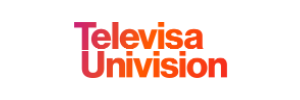
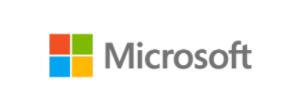
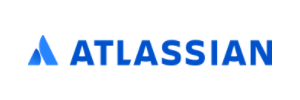

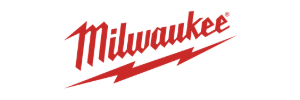
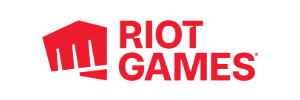
Loved by customers at every stage of growth
See what our users have to say about building with Statsig

"Statsig's experimentation capabilities stand apart from other platforms we've evaluated. The ease of use, simplicity of integration help us efficiently get insight from every experiment we run. Statsig's infrastructure and experimentation workflows have also been crucial in helping us scale to hundreds of experiments across hundreds of millions of users."
Paul Ellwood
Head of Data Engineering

"We evaluated Optimizely, LaunchDarkly, Split, and Eppo, but ultimately selected Statsig due to its comprehensive end-to-end integration. We wanted a complete solution rather than a partial one, including everything from the stats engine to data ingestion."
Don Browning
SVP, Data & Platform Engineering

"Excited to bring Statsig to Whatnot! We finally found a product that moves just as fast as we do and have been super impressed with how closely our teams collaborate."
Rami Khalaf
Product Engineering Manager
"Statsig has enabled us to quickly understand the impact of the features we ship."
Shannon Priem
Lead PM

"I know that we are able to impact our key business metrics in a positive way with Statsig. We are definitely heading in the right direction with Statsig."
Partha Sarathi
Director of Engineering
"Working with the Statsig team feels like we're working with a team within our own company."
Jeff To
Engineering Manager
"[Statsig] enables shipping software 10x faster, each feature can be in production from day 0 and no big bang releases are needed."
Matteo Hertel
Founder

"Statsig has been an amazing collaborator as we've scaled. Our product and engineering team have worked on everything from advanced release management to custom workflows to new experimentation features. The Statsig team is fast and incredibly focused on customer needs - mirroring OpenAI so much that they feel like an extension of our team."
Chris Beaumont
Data Scientist
"The ability to easily slice test results by different dimensions has enabled Product Managers to self-serve and uncover valuable insights."
Preethi Ramani
Chief Product Officer
"We decreased our average time to decision made for A/B tests by 7 days compared to our in-house platform."
Berengere Pohr
Team Lead - Experimentation
"Statsig is a powerful tool for experimentation that helped us go from 0 to 1."
Brooks Taylor
Data Science Lead
"We've processed over a billion events in the past year and gained amazing insights about our users using Statsig's analytics."
Ahmed Muneeb
Co-founder & CTO

"Leveraging experimentation with Statsig helped us reach profitability for the first time in our 16-year history."
Zachary Zaranka
Director of Product
"Statsig enabled us to test our ideas rather than rely on guesswork. This unlocked new learnings and wins for the team."
David Sepulveda
Head of Data

"Brex's mission is to help businesses move fast. Statsig is now helping our engineers move fast. It has been a game changer to automate the manual lift typical to running experiments and has helped product teams ship the right features to their users quickly."
Karandeep Anand
President

"We only had so many analysts. Statsig provided the necessary tools to remove the bottleneck. I know that we are able to impact our key business metrics in a positive way with Statsig. We are definitely heading in the right direction with Statsig."
Partha Sarathi
Director of Engineering

"Statsig has been a game changer for how we combine product development and A/B testing. It's made it a breeze to implement experiments with complex targeting logic and feel confident that we're getting back trusted results. It's the first commercially available A/B testing tool that feels like it was built by people who really get product experimentation."
Joel Witten
Head of Data
"We realized that Statsig was investing in the right areas that will benefit us in the long-term."
Omar Guenena
Engineering Manager
"Having a dedicated Slack channel and support was really helpful for ramping up quickly."
Michael Sheldon
Head of Data
"Statsig takes away all the pre-work of doing experiments. It's really easy to setup, also it does all the analysis."
Elaine Tiburske
Data Scientist
"We thought we didn't have the resources for an A/B testing framework, but Statsig made it achievable for a small team."
Paul Frazee
CTO
"We use Statsig's analytics to bring rigor to the decision-making process across every team at Wizehire."
Nick Carneiro
CTO

"We've successfully launched over 600 features behind Statsig feature flags, enabling us to ship at an impressive pace with confidence."
Wendy Jiao
Staff Software Engineer
"We chose Statsig because it offers a complete solution, from basic gradual rollouts to advanced experimentation techniques."
Carlos Augusto Zorrilla
Product Analytics Lead
"We have around 25 dashboards that have been built in Statsig, with about a third being built by non-technical stakeholders."
Alessio Maffeis
Engineering Manager
"Statsig beats any other tool in the market. Experimentation serves as the gateway to gaining a deeper understanding of our customers."
Toney Wen
Co-founder & CTO
"We finally had a tool we could rely on, and which enabled us to gather data intelligently."
Michael Koch
Engineering Manager

"At Notion, we're continuously learning what our users value and want every team to run experiments to learn more. It's also critical to maintain speed as a habit. Statsig's experimentation platform enables both this speed and learning for us."
Mengying Li
Data Science Manager

"At OpenAI, we want to iterate as fast as possible. Statsig enables us to grow, scale, and learn efficiently. Integrating experimentation with product analytics and feature flagging has been crucial for quickly understanding and addressing our users' top priorities."
Dave Cummings
Engineering Manager, ChatGPT

"Statsig has helped accelerate the speed at which we release new features. It enables us to launch new features quickly & turn every release into an A/B test."
Andy Glover
Engineer
"We knew upon seeing Statsig's user interface that it was something a lot of teams could use."
Laura Spencer
Chief of Staff
"The beauty is that Statsig allows us to both run experiments, but also track the impact of feature releases."
Evelina Achilli
Product Growth Manager
"Statsig is my most recommended product for PMs."
Erez Naveh
VP of Product
"Statsig helps us identify where we can have the most impact and quickly iterate on those areas."
John Lahr
Growth Product Manager

"With Warehouse Native, we add things on the fly, so if you mess up something during set up, there aren't any consequences."
Jared Bauman
Engineering Manager - Core ML
"In my decades of experience working with vendors, Statsig is one of the best."
Laura Spencer
Technical Program Manager
"Statsig is a one-stop shop for product, engineering, and data teams to come together."
Duncan Wang
Manager - Data Analytics & Experimentation

"Engineers started to realize: I can measure the magnitude of change in user behavior that happened because of something I did!"
Todd Rudak
Director, Data Science & Product Analytics
"For every feature we launch, Statsig saves us about 3-5 days of extra work."
Rafael Blay
Data Scientist
"I appreciate how easy it is to set up experiments and have all our business metrics in one place."
Paulo Mann
Senior Product Manager